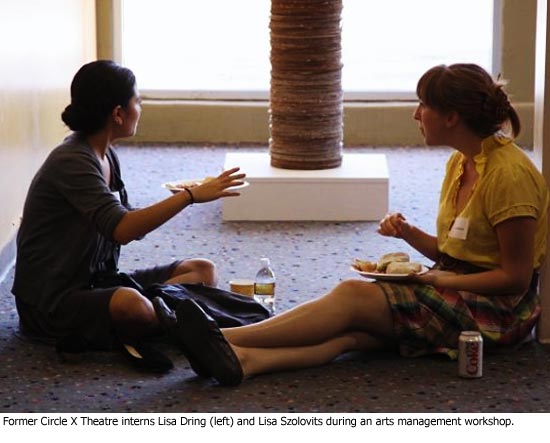Adopt-a-palooza at county animal shelters
March 4, 2010
This Sunday, the Los Angeles County Department of Animal Care and Control is hosting simultaneous pet adoptions at sites across the county to call attention to new Sunday hours at all six of its shelters. Starting this week, the shelters will be open seven days a week. For this Sunday’s special adoption event, the Found Animals foundation (www.foundanimals.org) will contribute $10 for every adoption, reducing the fee for new owners.
For a more information, and a list of locations, click here.
Posted 3/4/10
Mixed outlook for L.A. women’s health
March 4, 2010
Women in all parts of Los Angeles County are getting more obese and their diabetes rates are rising, according to a new report that examines female health patterns and behaviors across the county. And significant numbers of women are failing to get enough exercise—especially those over 40.
Despite those troubling trends, however, the overall mortality rate for women has improved, according to the study, “Health Indicators for Women in Los Angeles County,” the second of its kind prepared by the Department of Public Health.
True to its subtitle, “Highlighting Disparities by Ethnicity and Poverty Level,” the report also calls attention to a series of thought-provoking findings about the state of women’s health in the county.
The most disturbing is the finding that African-American women are dying far more frequently from many common chronic diseases. White women have a higher incidence of breast cancer, but blacks are more likely to die from it. Black women also smoke more and face higher rates of communicable diseases and exposure to violence. Yet they report better access to health care, and rate their own health higher than do other groups. Researchers say that poses a quandary that will require more study of the potential health impact of social factors like discrimination and stress.
Overall, the leading cause of death among all women remains coronary disease, followed by stroke.
“It still startled me to see such high mortality rates for African American women,” said Dr. Rita Singhal, medical director of the county’s Office of Women’s Health, who spearheaded the study as well as the previous report in 2007. “What are those hidden factors that are contributing to this disparity?”
Singhal also noted that the current report draws from a number of sources, including data collected as part of the county health survey, which was conducted in 2007—“right before the economic downturn.”
At the time covered in the report, 21% of women did not have health insurance—a number that is likely to have grown. The correlation with preventive health care was clear: these women were less likely to have had a recent mammogram or Pap test than those with insurance.
Singhal also pointed out that some of the positive findings in the report, including good access to prenatal care and contraceptives, may be eroded because of cuts to government funded health programs.
The next survey will draw on data taken this year, and is expected to be published in two to three years.
Posted 3/4/10
Sheriff Baca: last call for costly overtime
March 3, 2010
Outlaws beware: Los Angeles County’s top cop could soon be slapping the cuffs on you—personally. And why not?
“I’m in perfect physical health. I run 8 miles a day,” said Lee Baca, a former Marine, now in his third term as sheriff.
Because of the county’s fiscal crunch, Baca said in an interview Wednesday that he’ll be sliding back into a black-and-white—even though it’s been “dozens of years”—as part of an unprecedented assault on the Sheriff Department’s huge overtime budget.
Under an initiative called “Save Our Jobs,” Baca is returning virtually everyone—from the department’s top tier to its desk-bound sworn employees—to the field for 8 hours a week to backfill vacancies and to staff needs traditionally funded by overtime.
Baca insisted that the department’s brass is on board with the overtime plan that would get them out of their suits and ties. He said “they’re proud of what we do and are not afraid or unwilling to do it.” As for the rank-and-file, Baca said, they too understand the need to be “part of the solution” to avoid layoffs. “We’re trying to save jobs, and it’s their jobs we’re trying to save,” he said.
The proposed overtime reductions, which could amount to $58 million during the next 16 months, are part of a broader cost-savings effort that is being imposed on all county agencies because of severe revenue losses. These agencies have been asked by the CEO’s office to shave 9% from their budgets–$128 million in the case of the Sheriff’s Department. Baca said that although the Board of Supervisors has wisely been squirreling away reserves for a rainy day, “that rainy day has now come.”
“As an elected official,” Baca said, “I believe it’s important to further pinpoint what the Sheriff’s Department can do to help the county with its budget shortfall.”
To that end, the sheriff said he also hopes to save an estimated $28 million by transferring inmates and staff from the 1,900-bed North Facility of Peter Pitchess Detention Center in Castaic, integrating them elsewhere in the county’s immense jail system. He emphasized that the Pitchess facility will not be entirely closed because it would cost too much to reopen when the economy eventually improves.
Baca’s overtime plan, meanwhile, is well timed for another reason. The overtime expenditures, which for years have annually soared beyond $100 million, have recently come under scrutiny.
In a December report, Los Angeles County auditors said hundreds of Sheriff’s Department employees were racking up such significant amounts of overtime that they could be jeopardizing their effectiveness on the job because of fatigue.
Separately, Supervisor Zev Yaroslavsky’s office found that, in 2008, at least 10 deputies more than doubled their salaries with overtime. One deputy with a base pay of $105,561, for example, collected an additional $130,214 in overtime, bringing his annual pay to $235,775. He was one of at least 15 deputies and sergeants who earned more than $200,000 because of overtime, according to county records.
Sheriff’s officials, responding to the findings, noted that overtime for fiscal year 2008-2009 was dramatically reduced as department vacancies were filled, meaning fewer overtime hours were needed to backfill by existing personnel.
Following the audit, the Board of Supervisors unanimously approved a motion by Yaroslavsky and Supervisor Gloria Molina directing the CEO to create a plan that would, among other things, increase oversight of overtime.
Those recommendations will soon be presented to the Board of Supervisors. They will include a plan for the Auditor-Controller’s office to review—and issue quarterly reports—on the rationale and costs for a selected sample of deputies who have increased their base pay by more than 50% in overtime.
Posted 3/3/10
Arts internships still up in the air
March 2, 2010
The curtain could come down on L.A. County’s long-running arts internship program this summer, after the Board of Supervisors, wary of an impending fiscal crunch, voted Tuesday to move consideration of the program’s fate into upcoming budget deliberations unless money can be found to support it in the county’s civic art program.
Because of the short timetable for placing interns in summer arts jobs, supporters say that moving the program into budget talks for next fiscal year would effectively kill it.
Supervisors asked the Chief Executive Officer to report back next week on the possibility of using money to fund this year’s internships from the county’s Civic Art Program, which allocates 1% of the budget of new capital projects for the installation of art in and around them.
The CEO had recommended that the board adopt a stripped-down version of the program that would have put 75 college undergrads to work this summer. The program’s funding–$500,000 last year–was to have been cut in half, with concessions and contributions required from participating arts organizations.
But coming up with $250,000 from county reserves was too much for the board majority in the current economic climate.
“It’s going to be a very tough year for us,” board chair Gloria Molina said. “We’re going to be facing some unbelievable challenges.”
She, like other supervisors, praised the internship program. But she suggested that the arts commission and the organizations that employ arts interns needed to do more to tap into Temporary Assistance for Needy Families (TANF) welfare funding to fill their positions this summer.
Molina said the TANF recipients include single mothers getting back into the work force, with children depending on their paychecks. “They might not be the bright young college interns,” Molina said. “They are needy families…who need some help.”
She said the TANF program has created 4,566 temporary subsidized jobs in the private and public sector–more than 1,100 of them in Los Angeles County workforce, from the parks department to the Registrar-Recorder.
“I do hope that the arts community will step up and take advantage of this wonderful program,” Molina said.
Searching for compromise, Supervisor Zev Yaroslavsky briefly suggested that the county put up $125,000 for this summer’s program, with another $125,000 coming from TANF. Then Supervisor Don Knabe offered a motion to investigate using funding from the civic arts program, and, if that proves impossible, including the program in the overall budget debate. That motion passed 3-2, with Supervisors Yaroslavsky and Mark Ridley-Thomas voting against it.
In its 10 years of existence, more than 1,100 college undergrads have taken part in the summer arts internship program. Many of the participants are pursuing studies they hope will lead to careers in the arts. Some end up being hired by the organizations for which they interned.
In the Hall of Administration lobby after the vote, supporters of the internship program, many wearing red-and-white stickers reading “Art Feeds LA,” said they were disappointed and puzzled.
“It’s a little bit head-scratching,” said Cynthia Campoy-Brophy of The HeArt Project, which provides arts education for teens in continuation high schools. “We know there’s a budget crisis, but this is such a win-win project that leverages such great benefits for the entire community.”
Danielle Brazell, executive director of the nonprofit organization Arts for L.A., which mobilized former and potential interns to speak out in favor of the program, said floating the notion of using TANF for arts internships “is really positioning apples and oranges.” The CEO report to the board had said that the TANF option was not an ideal fit for the arts internship program because of limitations it placed on which students could take part, and complications involving their compensation.
Immediately after the vote, Laura Zucker, executive director of the County Arts Commission, said she needed more time to reflect on the board’s decision before commenting. “OK, to be continued,” she told the group in the lobby.
Reached later, she said, “I think that we need to weigh the options that the board put forward.”
Posted 3/2/10












 Check for the latest closure information
Check for the latest closure information








